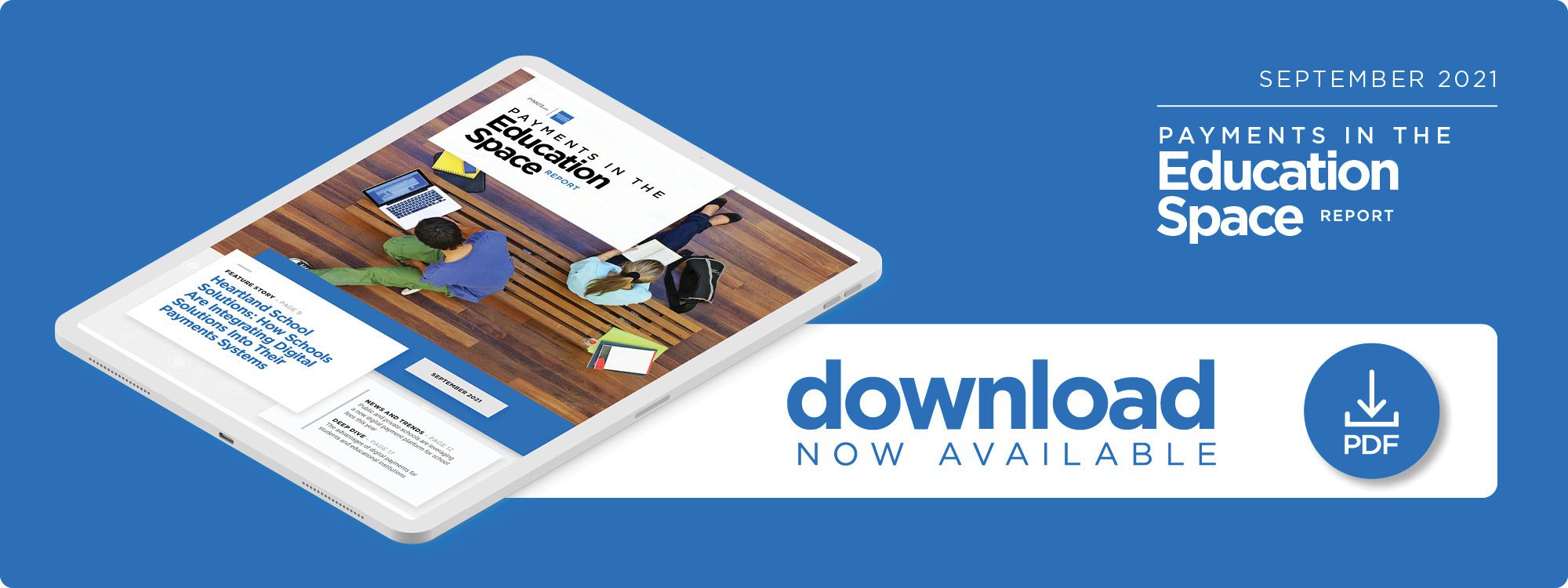Heartland School Solutions: How Schools Are Integrating Digital Solutions Into Their Payments Systems

Stacking cash and checks is no longer sustainable for school systems, but many are giving high marks to digital payments for their visibility and cost efficiency. In the Payments In The Education Space Report, Heartland School Solutions’ Jeremy Loch explains how digital payments help schools cut administrative costs and stay laser-focused on recouping student fees.
The pandemic accelerated the push toward digitization, with businesses and consumers alike realizing the many conveniences of alternative options such as contactless and real-time payments, ensuring that the return to slower, less secure methods is unlikely. Educational institutions were also forced to transition to digital methods for everything from from the way classes were taught to billing methods. While fully remote and hybrid learning trends are not expected to last, schools are adding a growing number of permanent digital payment options to their billing systems, according to Jeremy Loch, senior vice president and general manager at Heartland School Solutions, the company behind MySchoolBucks, a school commerce platform used by more than 30,000 schools in the U.S.
“When schools migrate from just taking cash and checks [to other forms of payment] … it provides certainly a great amount of convenience,” Loch said in a recent interview with PYMNTS. “They’re able to reduce a lot of the administration that happens with checks and cash, and they gain a more complete accounting. School administrators have full visibility now into everything that’s being paid for and by whom, versus ‘I just have a stack of checks.’ In a digital ecosystem, we can integrate student information with payments, so that it’s easier for them to proactively assign, track and collect those required fees on a student-by-student basis. They know every 10th grader who owes a lab fee and can bill them as such.”
If digital payment options are offered, consumer behavior trends suggest parents and students are more likely to use them over traditional methods. Their payments then will go directly into an online system, reducing friction associated with cash and paper checks, as school administrators no longer will have to manually track the funds paid against students’ accounts.
Security in the education payments space
Parents always have their children’s safety top of mind, and that protectiveness extends to their digital presence. Student account records contain students’ names and personal information as well as that of their legal guardians, so schools must assure both parties that their online payments are armed against privacy threats including identity theft.
“We apply the same security standards that we use to secure credit card data to the student data handled within MySchoolBucks,” Loch said. “We’re one of the first in our space to use multifactor authentication to better protect the end user. Our platform is designed to protect the schools we work with from exposure — none of the card data is ever stored at a district locally [and] administrative users never come across card numbers. Our customers just receive the funds; we build and host the commerce enablement platform, tokenize and store cardholder information, all to the highest PCI standard.”
While payment fraud is not nearly as common for schools as it is for banks and other financial services providers, according to Loch, schools still should take precautionary measures against potential hackers. Proper authentication can keep users safe and inspire them to interact with the platform more frequently, ultimately leading to a more efficient way to process payments for tuition, fees, extracurriculars and student spending accounts.
Lasting trends in payments for education
Consumer behavior always is evolving, but some actions become lasting habits. The pandemic may have driven consumers to adopt contactless payments, but 57 percent of consumers say they will continue using this form of payment even after the virus subsides. Parents not only want these options to be offered at their children’s schools but have come to expect them.
“One of the trends we see [in the education payments space] is around touchless payments, so whether that be near field, QR codes or card not present, being able to pay for things in advance is important, just so that people aren’t handling cash or having to take those payments in-person when the front office is open,” he said. “Just as American Express and other card providers have probably seen in other spaces, there is considerable interest in making digital payments the primary method of acceptance. [The pandemic] was that last push many schools needed, and I don’t think we’ll go back to that.”
To keep up with digitization and the increasing demand for more payment options, schools should consider using a professional payments provider that specializes in payments for education. Online transactions eliminate the need for any physical interactions, providing a safe and convenient way for parents to keep track of their children’s school-related finances without ever entering the front office at school.

